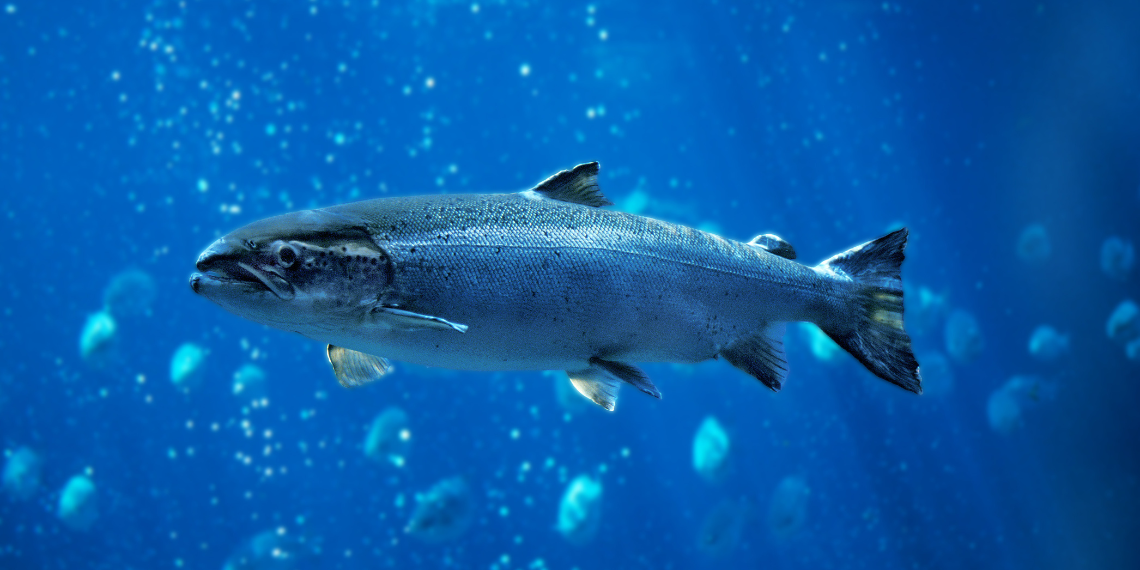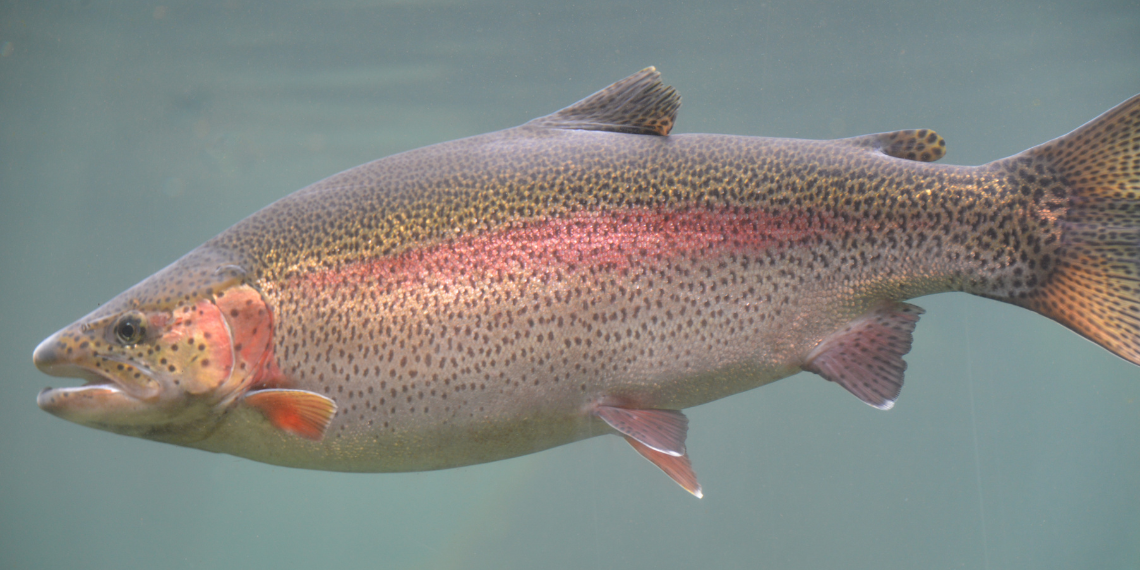Simply Trout-standing: New Study Hints at How Fish ‘Just Keep Swimming’ Amidst Environmental Changes

In the film Finding Nemo, Dory the Blue Tang once famously advised that, when in doubt, “just keep swimming, swimming, swimming.” But how exactly do fish heed this advice amid changing environmental salt concentrations? A fish-specific organ may hold the answer.
Dr. Nicholas Bernier and recent PhD graduate Dr. Brett Culbert from the Department of Integrative Biology, along with collaborator Dr. Stephen McCormick at the University of Massachusetts Amherst, recently assessed how hormones may help govern a fish’s response to changing salt concentrations.
The team looked at how gene expression in the caudal neurosecretory system (CNSS) changed across time, creating a first-of-its-kind profile in this fish-specific tissue complex. The CNSS is located at the far end of the spinal cord near the tail, where it produces and releases hormones. Interestingly, this structure has been lost in every vertebrate group apart from fishes.
A role for the CNSS in regulating salt concentrations has long been hypothesized, yet, how it functions at the molecular level remains largely unknown – despite decades of interest by fish biologists.
“The CNSS can be thought of like a secondary pituitary. Given the importance of the pituitary gland, it's not too far off to assume that the CNSS also functions as a hormonal ‘master regulator,’” explains Culbert.

Using rainbow trout (Oncorhynchus mykiss) and Atlantic salmon (Salmo salar), Culbert and Bernier measured gene transcript levels (the first step in gene expression) at several time points after fish had been transferred from freshwater to seawater. By using this approach, they were able to look at multiple hormones produced by the CNSS.
Using both rainbow trout and salmon was no coincidence. Most rainbow trout do not normally live in seawater, while salmon migrate to seawater as part of their natural life cycle – thus adding to the study’s ecological relevance.
The researchers noticed that several hormone systems associated with balancing salt concentrations were affected in the CNSS, notably the corticotropin-releasing factor (CRF) system that helps govern an organism's response to stress.
At 24 hours after transfer to seawater, transcript levels of CRF peptides were higher overall compared to one week post-transfer. However, this change was only apparent in rainbow trout since salmon had already increased levels of CRF in preparation for their natural migration to seawater.
This strongly suggests that CRF peptides play a role in helping both species physiologically adapt to changes in environmental salt concentrations.
But this was not all that they found. They were surprised to see changes in components of other hormone systems that, unlike CRF, had not been previously identified in the CNSS – namely, those that regulate growth and calcium maintenance. Interestingly, transcript levels of these hormones were higher 24 hours after transfer to seawater compared to one week, suggesting that they may also help trout acclimate to seawater.
“Whether these additional hormones act locally within the CNSS or enter the bloodstream, we don’t know yet. However, as analytical methods become more sophisticated, we should be able to figure that out,” says Culbert.
The study marks a major step forward in understanding hormone-related contributions of the CNSS. And while the study was driven mainly by a fundamental question about fish physiology, the information acquired could also contribute to conservation and aquaculture efforts for rainbow trout and salmon. Both species are vital to Indigenous communities and for recreational fishing, as well as their role within the wider food chain.
Adds Culbert, “We can’t stop environmental change, but if we can gain a deeper understanding of how these fish respond to stressors like changing salinity levels, we may be able to get an idea of how they’re faring before it's too late.”
Read the full study in The FASEB Journal.
Read about other CBS Research Highlights.